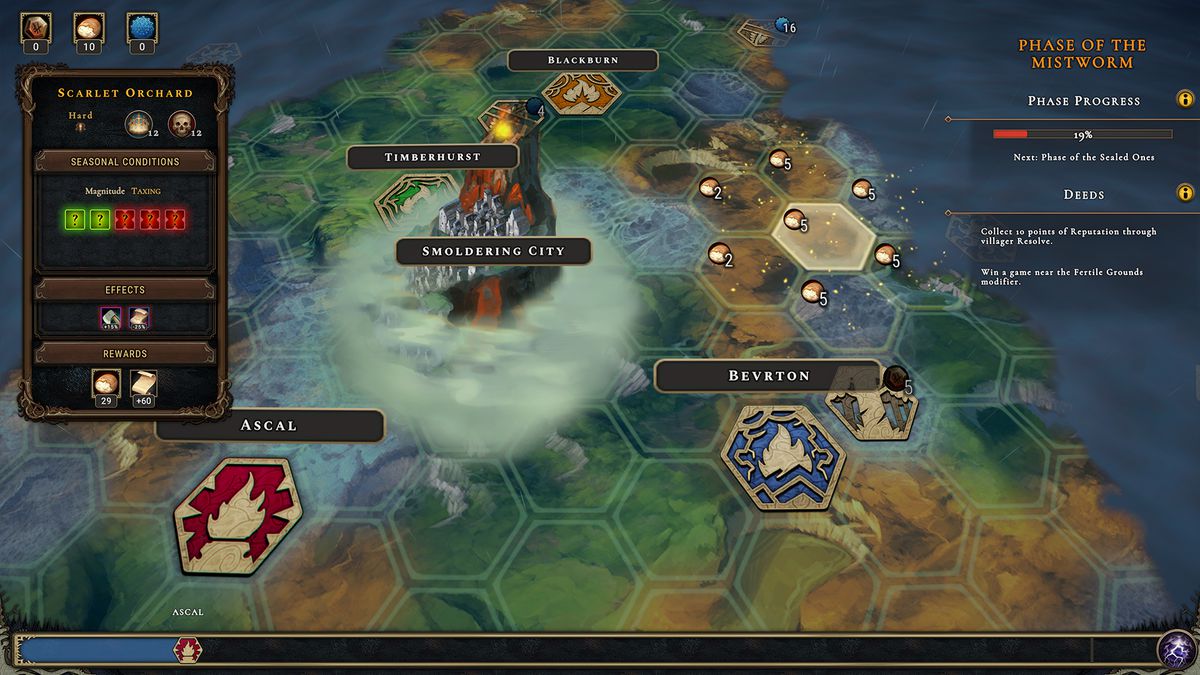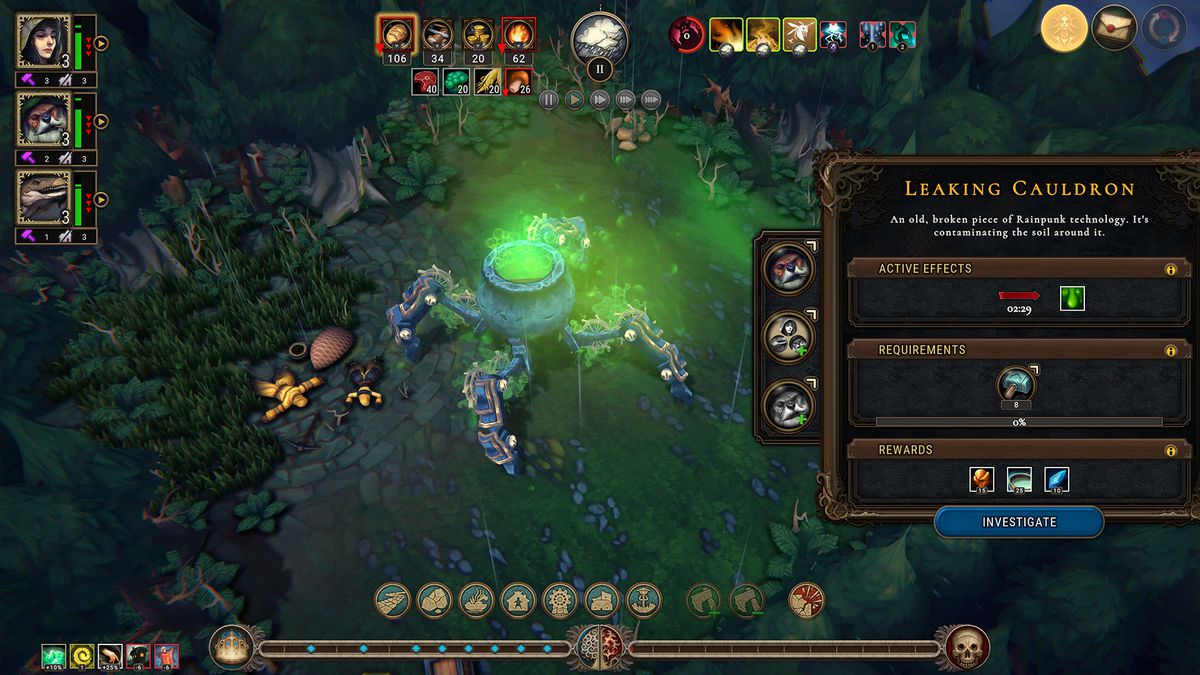I love city-building sims during every step of play — from laying down the foundations to planning a city grid, upgrading the complexity of buildings, and handling the bureaucratic elements of the late game. I’ve spent late nights playing Frostpunk and Timberborn, sucked into the fine balance of evading total town collapse. That said, if you had told me a week ago, “You’re going to spend about an hour making a settlement — and then you’re going to start over, again and again,” I’d have balked. But Against the Storm, the roguelite city builder that just came out of early access on Dec. 8, proves this formula is not only sensible, it’s fantastic.
To be clear, there are other games with this unconventional genre pairing. In Cult of the Lamb, there’s a home base that functions like a sim game where cultists work, worship, and obviously make live sacrifices. You can leave this base in order to partake in roguelike dungeon crawls. But Against the Storm doesn’t have that separation of mechanics. They’re perfectly married in a way that keeps things fresh while also empowering you to add complexity in each subsequent run. Fifteen hours in, I can hardly peel myself away.
In Against the Storm, you’re the queen’s viceroy in a land with cataclysmic weather events — you’ve been tasked with building settlements out from the capital, Smoldering City, toward a series of mysterious seals. You begin each “run” by selecting a tile on the game’s broody overworld map. You then pick your starting population out of a delightful fantasy lineup of lizards, beavers, humans, harpies, and more. Finally, you gather some basic supplies — stone, some edible mushrooms perhaps — before heading into the settlement site. Then it’s off to the races: At the site, you build shelters and basic structures, like a woodcutter to cut down trees, or sometimes even giant orchids. There’s a dark fantasy flavor to it all. Each site is full of hidden glades; reveal them and you might just find a poisonous flower that makes your food rot, or a cemetery that strikes fear in the hearts of your villagers.

Image: Eremite Games/Hooded Horse
From there the game turns into a resource puzzle. Each scenario gives you different choices for a series of “orders” to fulfill. You might need to deliver bags of crops, or enter a certain number of “dangerous glades” in a set amount of time. Completing these awards you with Reputation points. You typically need 14 points to win a scenario. All the while, you’re battling a capricious queen. The “Queen’s Impatience” meter only fills over time, and if it maxes out before reputation does, then you’ve lost the settlement.
This is the challenge and joy of the game: Creating a successful strategy as you go, before knowing what tools you’ll even have. Think of it like Hades, where Zagreus is presented with various boons from the gods — while all the options are fun, some can create awesome and unexpected synergies when fighting enemies. But in Against the Storm, you get options for building types, global perks, glades to discover, and orders to fulfill. You constantly have to finesse resource allocation: Your wood will be used for keeping the hearth warm, building new key buildings, and fulfilling a barrel order. And oh, by the way, don’t forget to make some food for your villagers. It’s so easy to screw yourself over at any step in Against the Storm.
Suffice it to say this is just the tip of the iceberg. There’s worker “resolve” and “hostility” — each citizen excels at different work and simply must have certain luxuries. These are delightfully silly: Lizards love to eat jerky and work in cookhouses (they’re coldblooded and love warmth); beavers enjoy biscuits and are very good at cutting wood. There’s also a weather cycle that dictates the timing of the harvest and how angry all the workers get. It’s called Against the Storm, so I’ll let you guess how much these dudes like rain. (Spoiler: They hate it.)

Image: Eremite Games/Hooded Horse
It sounds complicated, but it’s actually very digestible. The game effectively drip feeds its complexities, which helps curb the overwhelming feeling that can come with these sorts of management sims that have a dozen menus and mechanics at play. There’s a perk tree you can unlock over the course of the game, which introduces new gameplay mechanics — win or lose, you’ll be able to buy some of these upgrades. You don’t really need to worry about trading early on, for example, but as you unlock more perks, it becomes a major force.
Against the Storm always has a new trick up its sleeve, and like any great roguelite, it’s encouraged me to make unusual, gutsy plays that I would never try in a more typical city builder. Knowing each run has a finite end means I can always start over if things don’t work out. And when they do — it’s even sweeter.
Against the Storm was released on Dec. 8 on Windows PC. Vox Media has affiliate partnerships. These do not influence editorial content, though Vox Media may earn commissions for products purchased via affiliate links. You can find additional information about Polygon’s ethics policy here.
- SEO Powered Content & PR Distribution. Get Amplified Today.
- PlatoData.Network Vertical Generative Ai. Empower Yourself. Access Here.
- PlatoAiStream. Web3 Intelligence. Knowledge Amplified. Access Here.
- PlatoESG. Carbon, CleanTech, Energy, Environment, Solar, Waste Management. Access Here.
- PlatoHealth. Biotech and Clinical Trials Intelligence. Access Here.
- Source: https://www.polygon.com/24011415/against-the-storm-city-builder-roguelite-impression



